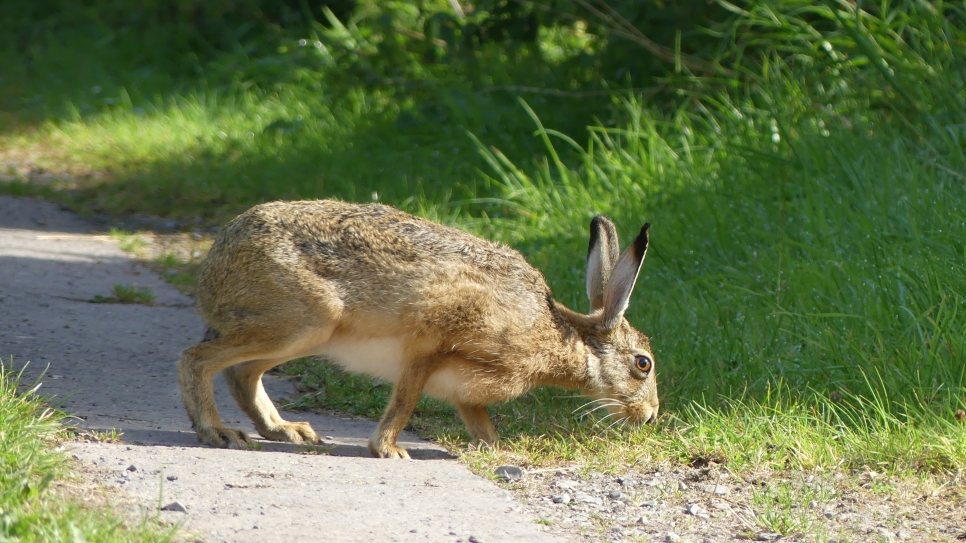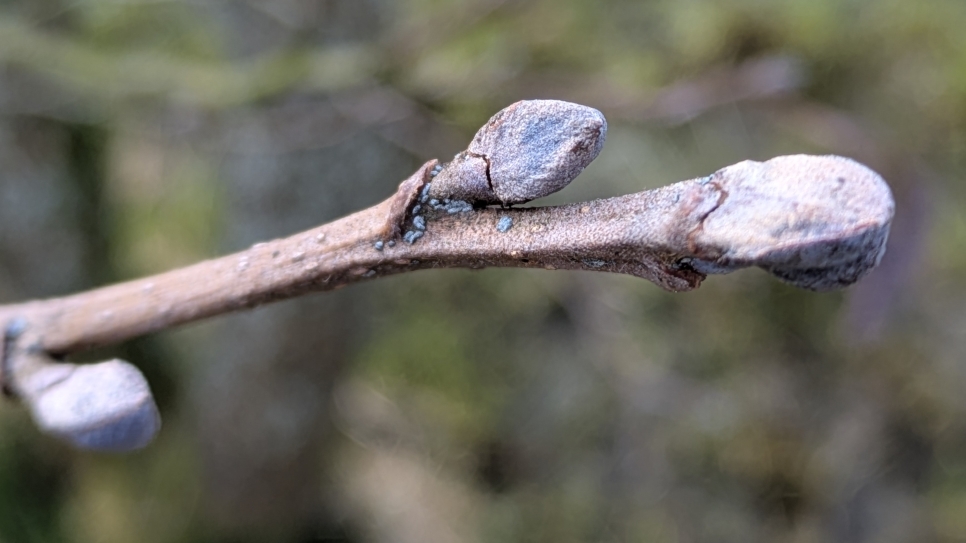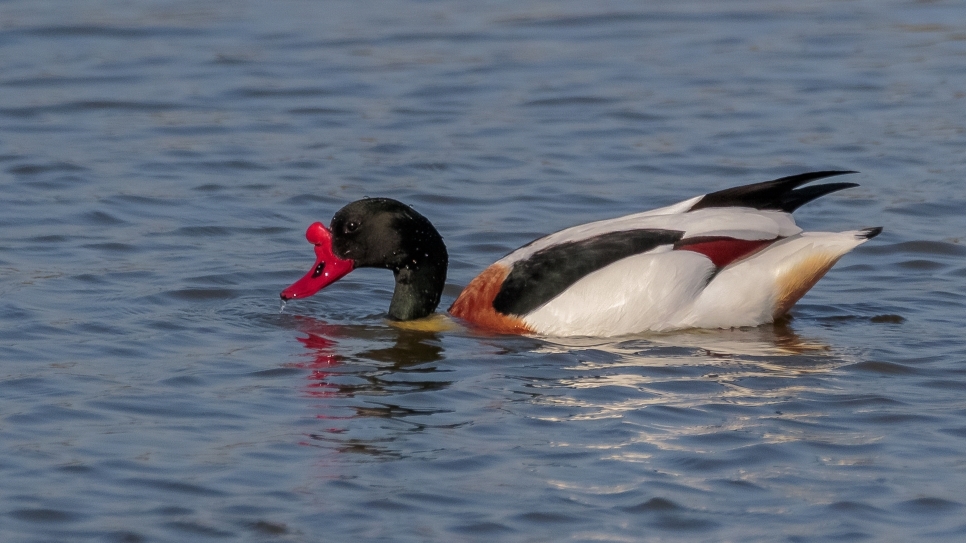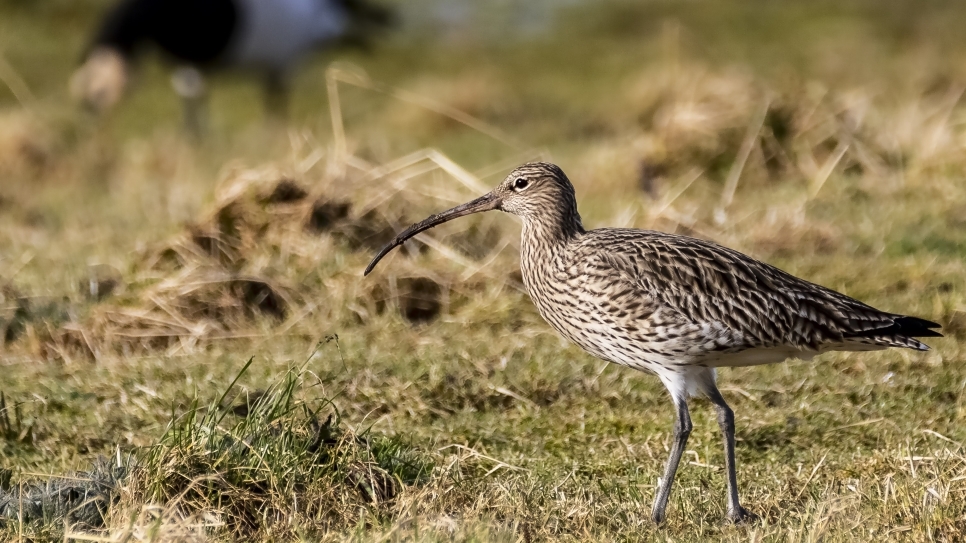Massive moth & Wood sandpiper
Convolvulus hawk moth & Wood sandpiper feature in the recent sightings highlights
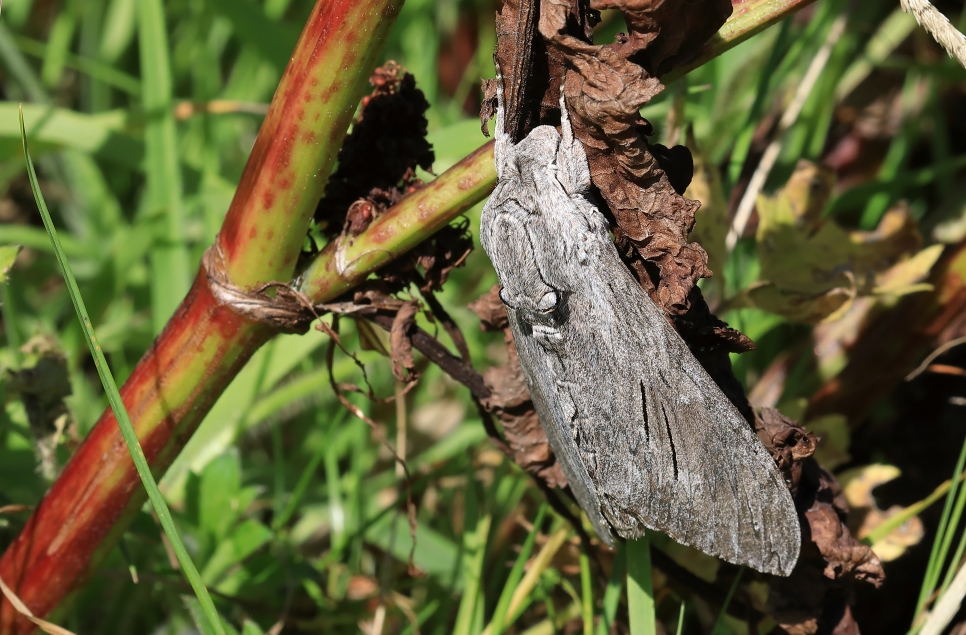
Feature photo by Brian Taylor
We were impressed by a sighting of a female Convolvulus Hawk moth in our paddocks this week. With a wingspan of around 10 centimetres, it is a migrant to the UK. Found mostly on coastal areas in south and east England, occasionally in large numbers, although has been seen as far north as the Shetland Islands. It most often occurs in late summer and autumn, usually with influxes of other migrant species,
The male has heavier markings than the female and sometimes has a broad central cross-band. The male also has thicker, longer antennae than the females. They usually hold the wings close to the body whilst resting, like the Privet and Pine Hawk-moths.
They are nocturnal and rest by day, when it can be seen on walls, rocks and tree trunks. They are attracted to light and can be seen from dusk to dawn. As they have an unusually long proboscis, they are able to feed on tubular flowers e.g. tobacco plant (Nicotiana), petunia, lilies and phlox, that many other moths cannot feed on.
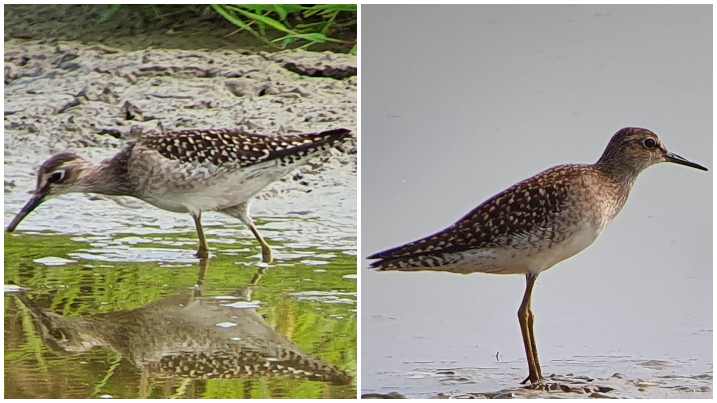 Wood sandpiper Photos by Fiona Moir
Wood sandpiper Photos by Fiona Moir
Additionally, a wood sandpiper was spotted by our guide in the hide last weekend. The wood sandpiper is a medium-sized wading bird, with a fine straight bill, yellowish legs and a conspicuous long white stripe from the bill over the eye to the back of the neck. In flight, it shows no wing-stripes and a square white rump.
It is a passage migrant in spring and autumn, breeding in Northern Europe and wintering in Africa. A few pairs breed in the Scottish Highlands. The flooding of some previously drained traditional marshes in Scotland may help this species in future. Wood sandpipers are listed as a Schedule 1 species.
An otter with a fish has also been glimpsed on the Folly pond, treating some of our visitors to a brief but memorable encounter.
| Birds | Mammals | Insects |
| Wood sandpiper | Otter | Convolvulus hawk moth |
| Green sandpiper | Roe deer | Azure damselfly |
| Marsh harrier | Hare | Banded demoiselle |
| Osprey | Badger | Blue tailed damselfly |
| Red Kite | Weasel | Common blue damselfly |
| Hobby | Bank vole | Large red damselfly |
| Sparrowhawk | Emerald damselfly | |
| Kingfisher | Emperor dragonfly | |
| Ruff | Four spotted chaser | |
| Little ringed plover | Common darter | |
| Black tailed godwit | Small white butterfly | |
| Little Egret | Peacock butterfly | |
| Grasshopper Warbler | Red admiral butterfly | |
| Garden Warbler | Large white butterfly | |
| Sedge Warbler | Small tortoiseshell butterfly | |
| Willow Warbler | Wall butterfly | |
| Reed Warbler | Meadow brown butterfly | |
| Swallow | Latticed heath moth | |
| House martin | Painted lady butterfly | |
| Water rail | Ringlet butterfly | |
| Linnet | Common blue butterfly | |
| Wheatear | Large skipper butterfly | |
| Skylark | Speckled wood butterfly | |
| Grey Wagtail | Orange-tip butterfly | |
| Lapwing | Green-veined White butterfly | |
| Snipe | ||
| Curlew | ||
| Nuthatch | ||
| Chiffchaff | ||
| Back cap | ||
